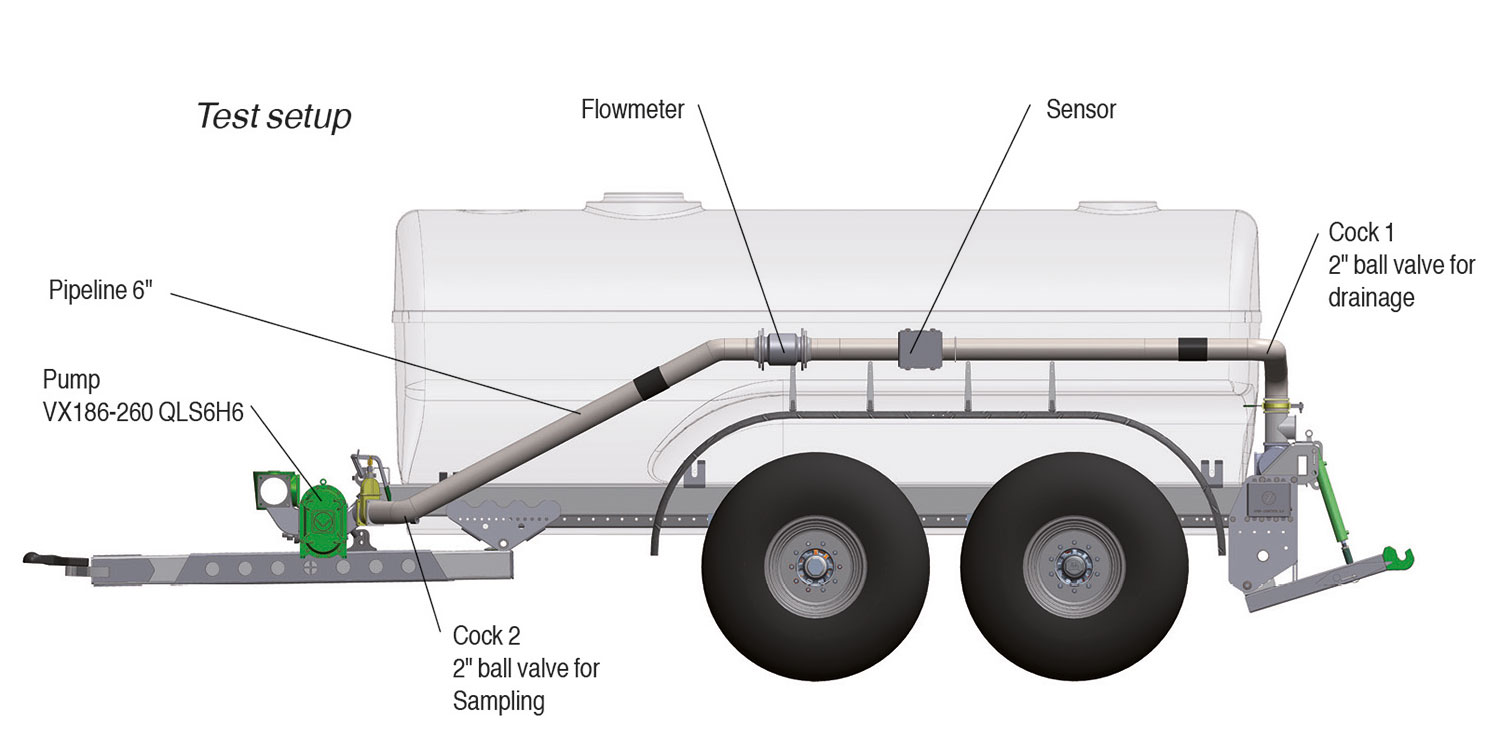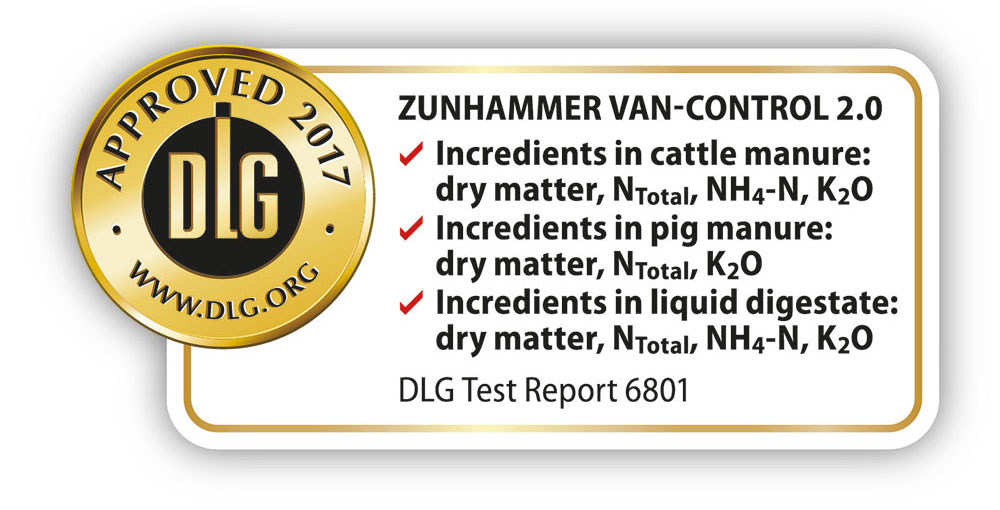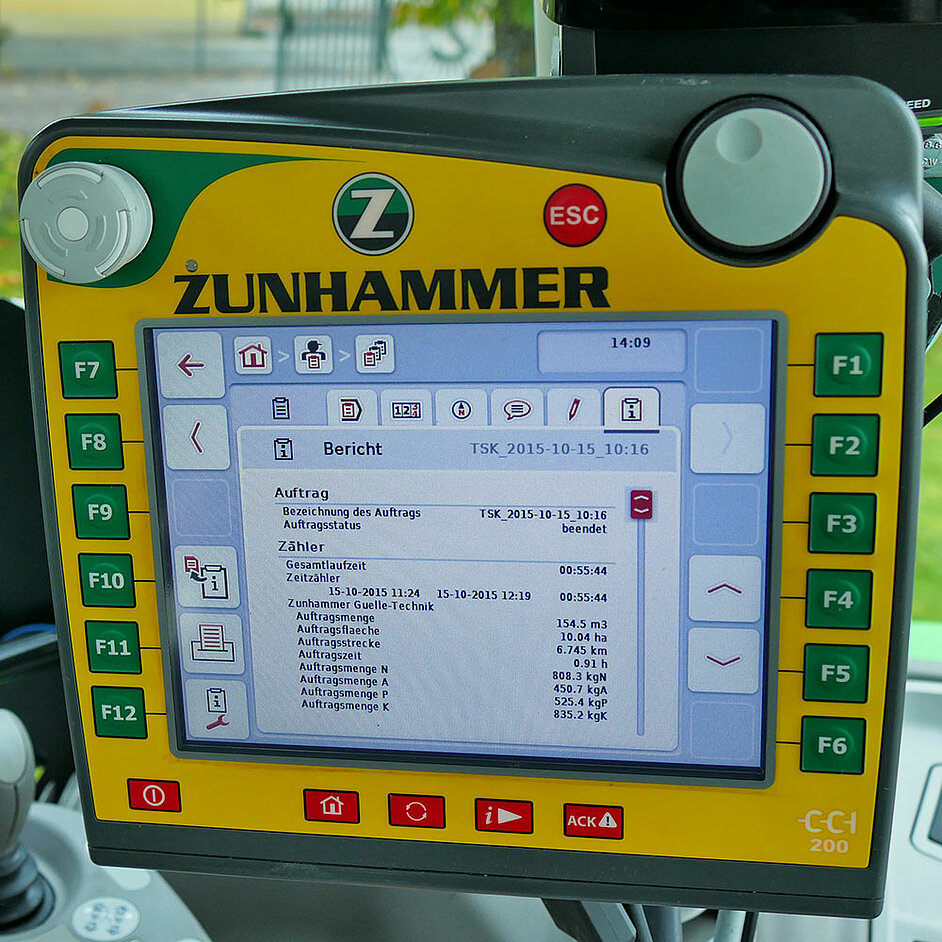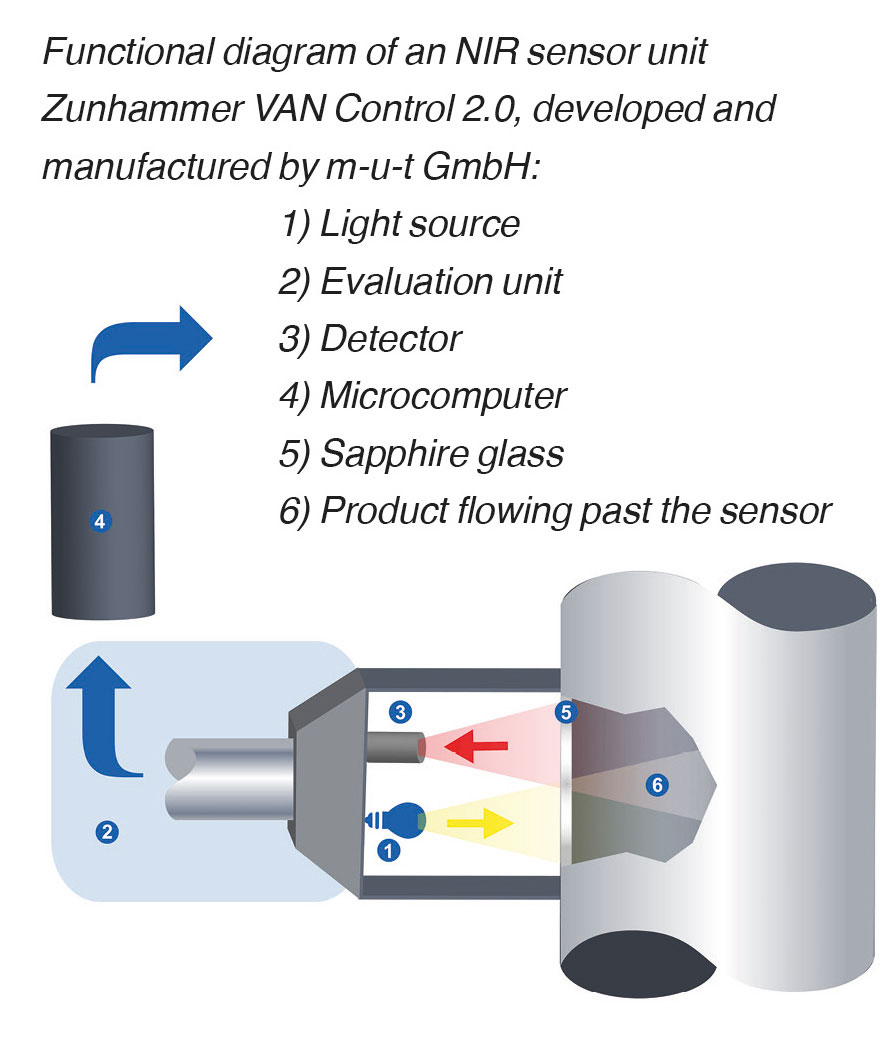Slurry ingredients at a glance
By Dr. Ulrich Rubenschuh
Zunhammer Van-Control 2.0: For a long time, the use of near-infra-red sensors (NIRS) has been discussed with regard to the determination of substances in liquid manure. The DLG testing commission "fertilizing technology" has now developed a test framework, and the DLG test centre has carefully examined the first manure NlR sensor.
Even as stall manure was the basis of nutrient supplement and the conservation of soil fertility for centuries, the use of mineral fertilizers in agriculture increased dramatically with the progress in the natural sciences. There are therefore quite a number of farms, and in particular pure arable farms in Germany, that supply their field crops exclusively with minerals.
On the other hand, there has been an almost blanket move from solid dung to liquid dung as technology has progressed in cattle breeding. In addition to cattle and pig manure, digestate from the biogas production has now also become a factor in recent years for use as farm fertiliser.
All farm fertilisers are complex fertilizers, a valuable supplier of organic substance for the formation of humus.
Thanks to their nutrient content and the fact that they are cost-effective and - especially in areas with high stocking density - are available in large quantities, slurry and digestate actually gain in importance, especially due to the rising prices for mineral fertilizers. However, arable farms want to exploit the legal limit of 170 kg of nitrogen per hectare in Germany as optimally as possible to gain the best possible yields and qualities of their crops. Although both manure forms can be spreaded with a similar distribution accuracy (at least at the technical level), not quite a few farms decide against the use of farm yard manure.
This is because their nutrient contents, many of which are not known exactly, often remain inhomogeneous even after a long stirring processes, while mineral fertilizer has a defined nutrient content. Added to this is the fact that time-consuming wet chemical processes must be applied to accurately determine the nutrient content in farm fertilizers, and sampling and processing
is a science in itself, and may contribute to a high level of measurement inaccuracy of the calculated nutrient content.
New possibilities through NIR
For some years now, the use of moisture analysis on combine harvesters and forage harvesters has allowed a widely disseminated measuring method already used in the laboratory and in the online monitoring of bulk solids to be successfully adapted for harvesting technology: the NIR spectrometry (Figure 1). The measuring devices use typical and above all measurable colour shifts between irradiated light and the spectrum of light, which is reflected from the illuminated material or is emitted again after short-term absorption. NIR stands for "near infrared" and refers to the area of the light spectrum used for the measurement.
However, the possibilities of the parameters to be monitored depend solely on the selection of the appropriate filter and the applied mathematical algorithms, i.e. the stored calibration models. So it was only a matter of time until nutrient analysis in blowed feed or ingredient analyses of flowing liquid manure should be sought.
Zunhammer Van-Control 2.0
The Van-Control 2.0 measuring system of the manure technology specialists Zunhammer from the Bavarian City Traunreut (Germany) is such a near-infrared measuring system, which was specially developed for the ingredient analysis of organic compounds such as slurry or fermentation residues. It can be installed in compliance with certain conditions into the existing piping system of almost every pumping station or every slurry tank truck. For the calibration model used in the system, the manufacturer specifies measuring ranges between 0.2 and 12 % dry matter, 0.17 and 9.91 kg/m³ total nitrogen, 0.1 and 4.47 kg/m³ of ammonium nitrogen and 0.2 and 6.81 kg/m³ of potash. The measurement is performed continuously on the flowing liquid manure. In measurement mode, determined measurement values are output in one-second intervals. Depending upon your needs, the current values are displayed in real-time, or mean values at user-specific time intervals.
Online measurement vs. reference method
Compared with the reference method? In the DLG-Test, exactly this comparison was made for cattle and pig manure, as well as liquid digestate. Depending on the type of farm fertiliser, five individual samples as different as possible from each other are measured and sampled at different farms. To do this, a partial volume of 3-5 m³ is pumped into an intermediate tank from the previously stirred slurry tank. A pump and a common piping system with one or more sensor to be checked are installed at the intermediate tank, as well as a flowmeter to check the flow rates and a bypass for sample removal (Figure 2). The DLG approval for an NIR sensor system can be awarded for individual types of manure and ingredients. However, the requirements for the determination of the total nitrogen content must be fulfilled at minimum. In the DLG test, the Zunhammer Van-Control 2.0 mobile NIR sensor was able to generate measurement values in many areas that were within the standard quality range defined by the DLG testing commission. In the dry mass, the sensor exceeded the required minimum standards in all three types of manure, and in pig manure it was even awarded a "very good". In addition, the sensor scored well in cattle slurry, providing good measured values for the determination of the ammonium nitrogen content.

Conclusion
The Zunhammer Van-Control NIR sensor 2.0 could show in the DLG test that in the measurement of the nutrient content indicated in the test mark for cattle and pig manure as well as liquid digestate, it satisfied the measurement accuracy requirements for DLG approval. A significant advantage of NIR technology compared to the conventional method for the determination of the ingredients in liquid digestate via sampling and laboratory analysis consists in the immediate availability of measurement values and in the permanent measurement of the ingredients over the total volume of supplied fertilizer. It is assumed that with the proliferation of the NIR sensors, the calibration models and therefore their accuracy will further improve. In addition, official recognition of these new technical possibilities may result in an increase of usage of farm fertilisers and make the transfer of proven, nutrient-rich slurry from typical cattle-breeding regions to regions of arable farming more profitable for all those involved.






